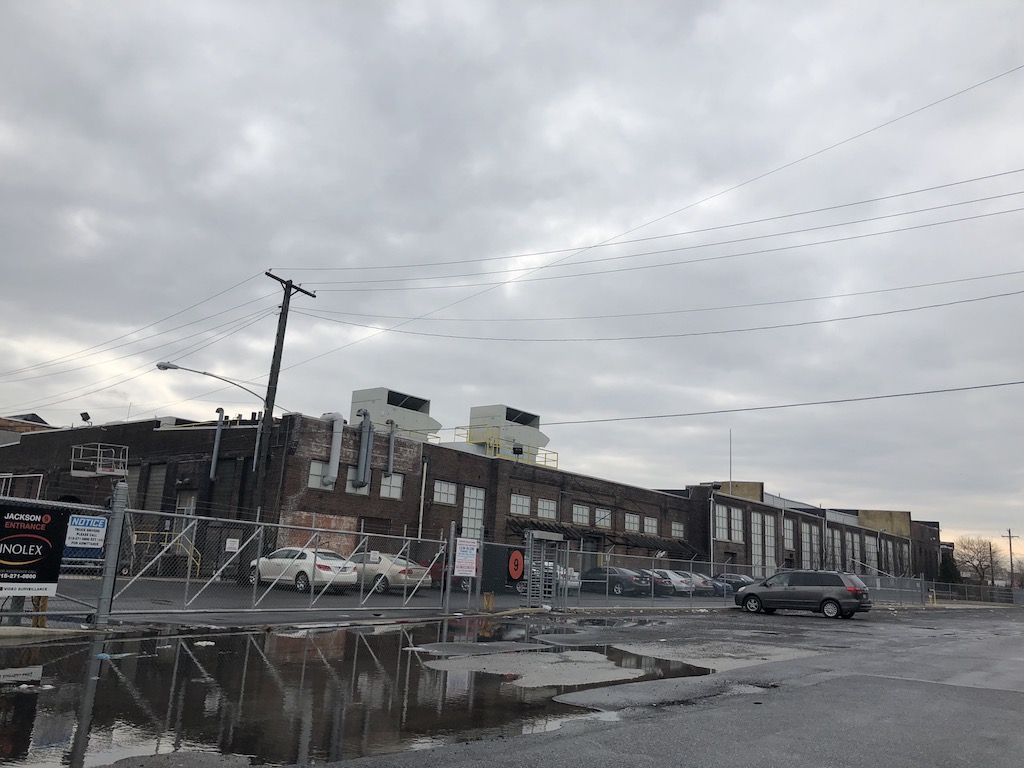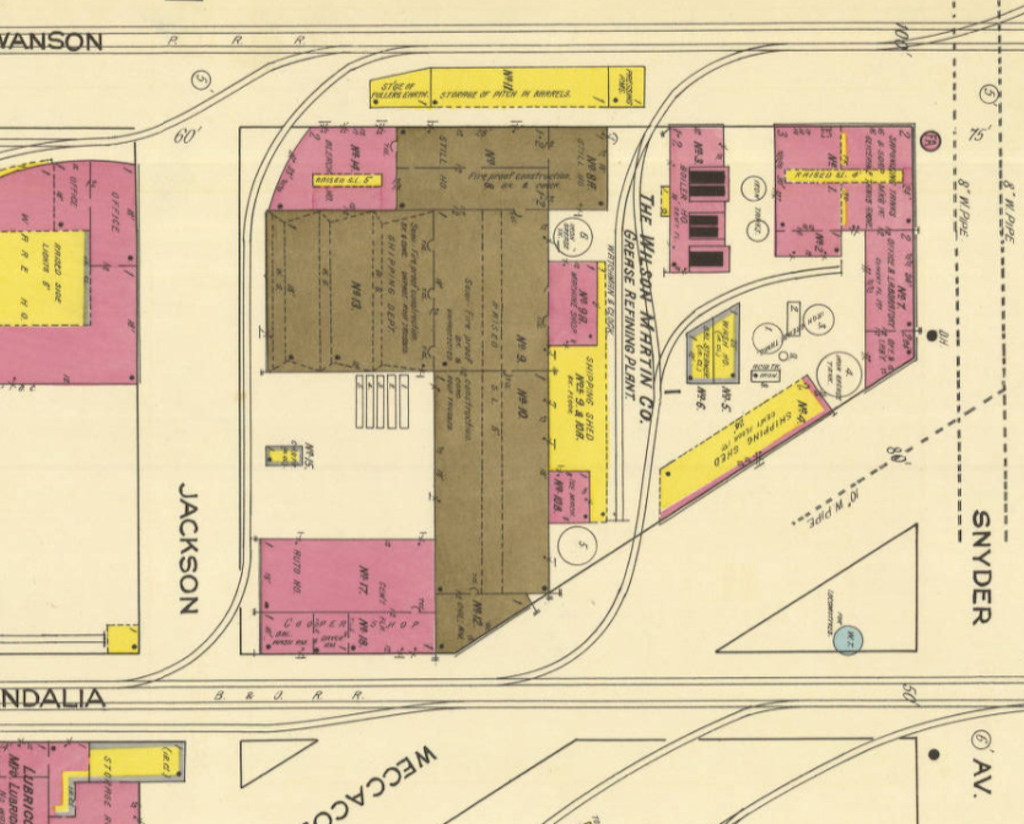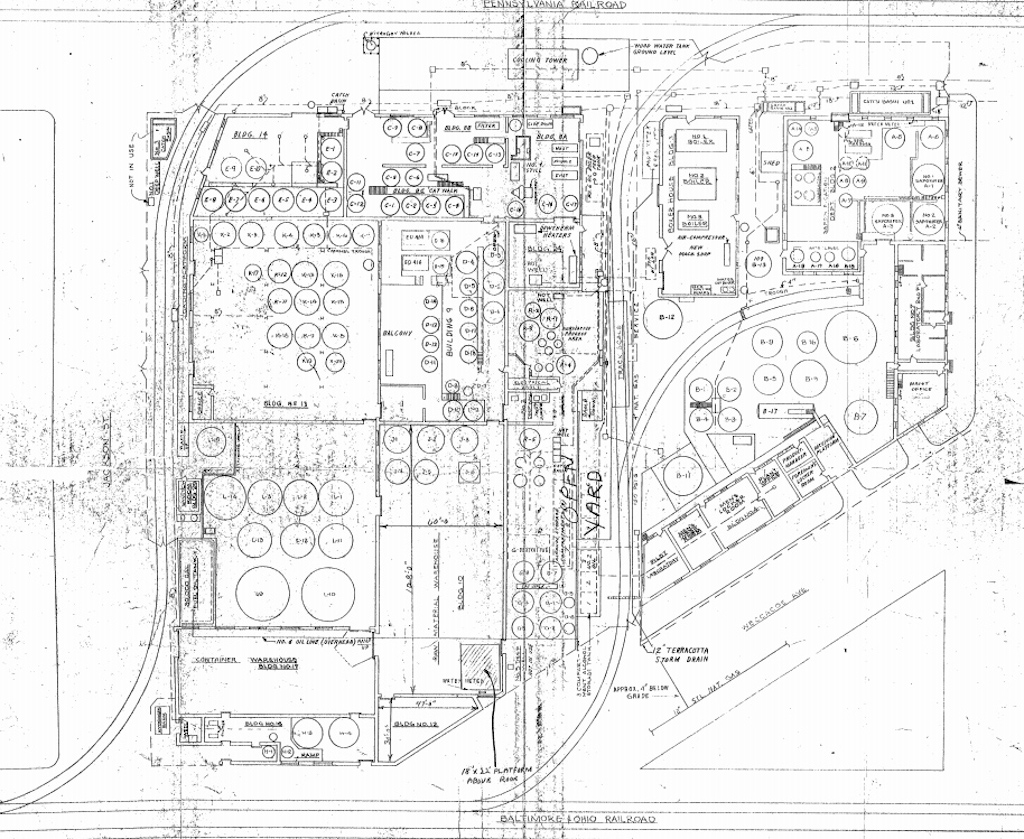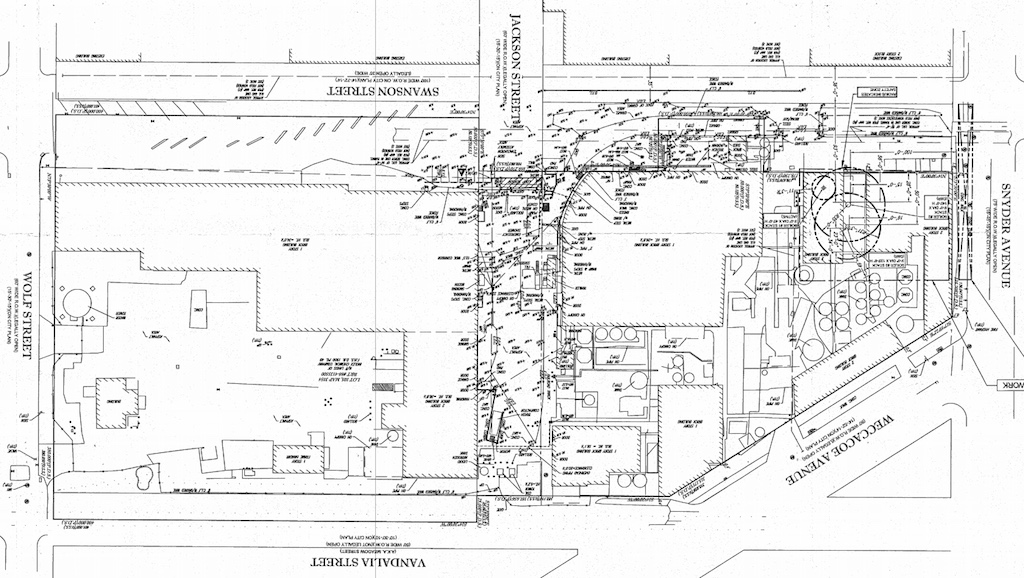Many Philadelphians take the nameless shopping district along the southern part of the city’s Delaware waterfront for granted even through the auto-oriented area of strip malls and big-box stores feels more like the Northeast than South Philly. Nonetheless, the vestiges of the area’s industrial roots are visible in all directions– the massive old industrial warehouses; some still in warehouse use, others repurposed as self-storage, strip clubs, retail stores, and a legendary wrestling venue. While some old industrial concerns still operate in this retail wonderland, none is more noticeable than the Inolex Chemical Company complex bounded by Snyder and Weccacoe Avenues, Wolf, Swanson, and Vandalia Streets. This monstrous complex consists of tarnished old industrial buildings tangled among pipes, wires, metal platforms, storage tanks, mechanical whatsits, and various unidentifiable objects behind a chain-link fence topped by barbed wire.



This industrial complex has been occupied by the same company (through numerous buy-outs and name-changes) since at least 1915. Only a couple of decades earlier had industrial concerns set themselves up in this area– it was previously an undeveloped wilderness with the exception of the ancient town of Martinville, whose only evidence of existence today is the irregular property outline of 2410 Weccacoe Avenue.
It was in 1915 that the D.B. Martin company purchased some buildings from the General Manufacturing Company, whose name still shows on the Snyder Avenue side of the complex. D.B. Martin was the largest meatpacking company on the east coast at the time and had just built an iconic high-tech slaughterhouse that still stands at 30th and Market Streets several years earlier. Their intended use of the building was to expand the portion of their company dedicated to manufacturing lubricants from animal fat. In fact, the company, when founded in 1892, completely focused on manufacturing lubricants before they were ever in the meatpacking business.

By 1920, D.B. Martin was bought-out by their biggest competitor, Wilson and Company out of Chicago, and became the Wilson-Martin Company. After this merger, the Snyder and Swanson plant was expanded again and again and again over the next few decades until they nearly completely filled the entire block bounded by Snyder and Swanson Avenues, Weccacoe, Jackson, and Vandalia Streets. Part of the reason for this was Wilson-Martin’s innovation in creating new technology that allowed for continuous production of their products, blowing out the competition.
On September 1st, 1966, the city authorized the removal of the segment of Jackson Street between Vandalia and Swanson Streets to allow Wilson-Martin to expand its operation south all the way to Wolf Street, creating the 260K sqft parcel it stands on today. A year later, Wilson-Martin was purchased by conglomerate Ling-Temco-Vought, which split the parent company up into several concerns, the most well-known being the Wilson line of sporting goods. Wilson-Martin became Wilson Pharmaceutical and Chemical– the plant then produced over 100 pharmaceutical products. In 1970, after becoming a subsidiary of American Can Company, the company gave up on the animal products, changed its name to Wilson Diagnostics, and manufactured personal care and laboratory chemicals in addition to the pharmaceuticals. In 1974, the company was re-named once again to Inolex, which is an abbreviated portmanteau of the words innovation, technology, and excellence.

In 1981, Inolex was purchased by its current owners and became a company upon itself instead of a subsidiary of larger corporations. While it produced many types of products over the following decades, Inolex is now focused on cosmetics and is considered a leader in the industry regarding sustainable and environmentally-friendly practices.

Later this year, Inolex will open a new facility in Charlotte, North Carolina, figure it’ll be a little more modern than their South Philly location. But it’s probably safe to assume it won’t be quite as convenient to an Ikea.
–Dennis Carlisle

Leave a Reply